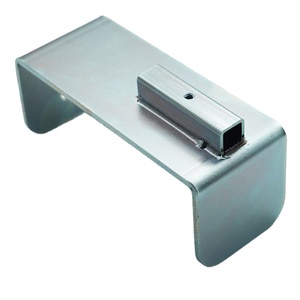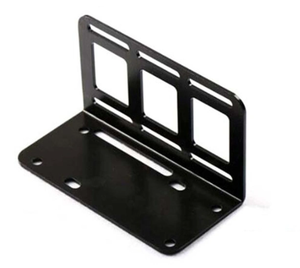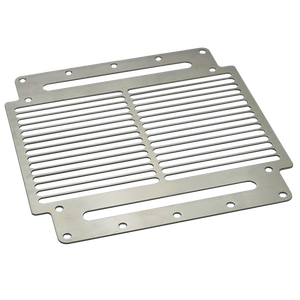
All categories
Featured selections
Trade Assurance
Buyer Central
Help Center
Get the app
Become a supplier

(15336 products available)














Press machine components are essential parts of a hydraulic press, which manufactures and shapes materials through compression. Such components include:
Derived from durable steel, these components are used to convert fluid energy to mechanical energy to help the machine exert pressure. They are offered in various sizes and match the press capacity. In addition, they come in single-acting and double-acting models, depending on whether they exert pressure in one or two strokes.
Also known as plungers, press machine tires are responsible for applying pressure to the material to be compressed or formed. This component compresses materials; thus, it is often integrated with tough metals, including tungsten and chromium. However, poor-quality plungers may experience explosive backfires when pressed beyond tolerable limits.
These pumps are crucial in machine operation and generate the hydraulic pressure required for the press to function. Operating on different mechanisms, hydraulic pumps come in manual, electric, and pneumatic types. While manual hydraulic pumps require frequent hand inputs to build pressure, electric versions use motors to ensure constant pressure. Pneumatic variants are often cheap air compressors and frequent bursts.
The frame is the component designed to support and house all press elements. It is responsible for absorbing imposed forces during pressing, which helps maintain stability and alignment. The frames come in various styles, including c-frame, column style, and full frame. C-frame offers accessibility, while a full frame provides excellent rigidity.
These press components regulate hydraulic fluid flow and pressure, controlling plungers and other movements. Some control valves include manual, solenoid-operated, and pressure relief valves. The manual control valves are frequently turned by hand to achieve the desired flow rate and pressure, while solenoid valves function electronically.
The hydraulic press machine is used in various industries, as illustrated below.
The press components are crucial for shaping and manipulating metals to produce various parts and structures. They are used to stamp, bend, and forge metal into desired shapes and sizes during manufacturing. It also smooths the rough metal surface, increasing its aesthetic value while minimizing the likelihood of the metal shattering into dangerous sharp pieces.
The automotive industry relies on press components in many ways, especially in making body parts. These machines are used to shape metals, including panels, hoods, and doors, through stamping and forming. Moreover, the components help assemble the car parts by ensuring the pieces fit well and are held in place for optimum performance.
Press components play a crucial role in the injection and compression molding process in the plastics industry. They are used to shape plastics into different products, from containers and toys to automotive components. Plastics are shaped using these machines, promoting the creation of new products.
Electronic devices contain numerous components manufactured through pressing operations, including circuit boards and connectors. These machines shape metals and other materials to produce components such as capacitors and batteries.
Press machine parts are used to manufacture and industrially handle packaging materials, such as aluminium foil and plastic containers. They are responsible for producing lightweight yet durable packaging, especially in the food and drug industry, which relies on the materials' ability to retain product integrity.
Press machine components specifications include cylinders, valves, pumps, and frames. Such technical specs as pressure ratings, materials, and compatibility with hydraulic fluids for prime parts like valves and pumps. Moreover, these specs determine the components' performance, efficiency, and durability. It's worth noting that pressure rating is a key factor that determines the machines' amount of exerted pressure.
Sensor installation differs depending on the types and models of the press components, although basic guidelines observe the following. First, properly verify the mounting surface to ensure it is free of contaminants that might affect stability. Ascertain that all the vital tools and parts are available for the installation, such as the press machine extension cords and screws. It is also advisable to consult the manufacturer manual for the component reference before proceeding with the installation. Afterward, carefully set the component in position and make adjustments as required to ensure appropriate alignment. After that, secure the component using the necessary fasteners or links, ensuring the minimum torque specifications have been met. Finally, do a thorough inspection of the installed component to check for stabilization or correctness. The installation process is often more complex and typically requires professional assistance.
A. Press machine components are made of various materials, each chosen for specific properties, such as durability and wear resistance. Durable steels, which include hardened steel, are the most popular materials used for manufacturing these components due to their ability to withstand immense pressure and stresses. Other materials include tungsten and chromium to offer additional wear resistance and hardness. The materials used to make press components are selected based on the application demands to ensure efficiency and longevity.
A. Hydraulic tyre blowouts are very dangerous and often caused by various factors. The most common causes include over-inflation, excessive heat, and punctures or foreign objects. Others include wear and tear, manufacturing defects, improper installation, and use of incompatible sealants. Maintaining proper tyre pressure, frequent inspections, and timely replacing worn-out tyres can prevent blowouts.
A. Yes, press machine components have varying names. For instance, pneumatic pumps are popularly known as pneumatic compressors. Moreover, hydraulic pumps are just referred to as hydraulic devices.
A. Green practices during the use of press machine components promote the protection of the environment and human health. The practices include properly disposing of hazardous substances like contaminated hydraulic fluids and worn-out seals and gaskets. Moreover, consider recycling metal scraps generated during pressing operations. In addition, using energy-efficient machines and components reduces the overall energy consumption of the press machine. Regular maintenance minimizes emissions and energy wastage.
A. Pressure relief valves are crucial for machine safety and maintaining operational efficiency. These valves automatically release excess pressure, preventing potential damage to components and reducing the risk of catastrophic failures. Additionally, they help maintain consistent pressure levels, improving the quality and precision of the products manufactured.